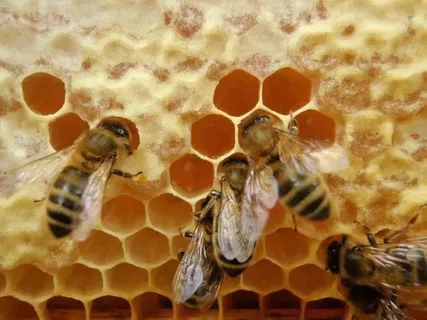
The Role of Foraging: Collecting Nectar
Foraging Behavior of Bees
Worker bees are the cornerstone of honey production. These industrious insects fly from flower to flower, searching for nectar—a sugary liquid secreted by plants. Using their specialized mouthparts, bees collect nectar and store it in their honey stomach, a special organ separate from their digestive system.
But how do they know where to go? Scout bees communicate the location of rich nectar sources to the colony using the famous “waggle dance.” This intricate dance provides directions to nearby flowers, ensuring the entire hive works efficiently.
Transforming Nectar: Inside the Bee’s Body
The Nectar Collection Process
Once nectar is collected, the transformation into honey begins immediately. Inside the honey stomach, enzymes like invertase start breaking down the complex sugars in nectar into simpler sugars like glucose and fructose. This enzymatic process is vital to making honey.
When a forager bee returns to the hive, it passes the nectar to another worker bee. This bee continues the transformation process by chewing the nectar and reducing its water content. This moisture reduction is essential for preventing fermentation and ensuring the nectar can turn into stable, long-lasting honey.
The Honeycomb: Nature’s Perfect Storage
How Beeswax Helps Preserve Honey
Bees are master architects, building intricate honeycomb structures made of beeswax. These hexagonal cells are not only strong but also maximize storage space. Worker bees deposit the processed nectar into these cells, fanning it with their wings to evaporate any remaining water.
Once the nectar becomes thick enough, bees seal the honeycomb cells with a wax cap. This capping protects the honey from contaminants and ensures it stays fresh for future use.
The Hive as a Honey Factory
Understanding the Bee Hive Structure
A beehive is more than just a storage unit for honey—it’s a thriving community. The structure of the hive is meticulously organized, with specific areas dedicated to brood (developing bees), pollen, and honey storage.
Worker bees play a dual role, caring for the queen and larvae while also focusing on producing and storing honey. The life cycle of honeybees is closely tied to this process, as the honey provides essential nutrition to sustain the colony during periods when flowers are scarce.
Why Do Bees Make Honey?
Honey production is essential for the survival of the colony. During colder months, when flowers are no longer in bloom, honey serves as a high-energy food source. It contains all the nutrients bees need to thrive, including sugars, enzymes, and small amounts of pollen.
Without honey, a bee colony would not survive the winter. This is why bees work tirelessly during the warmer months to produce and store enough honey to see them through the leaner times.
Fun Facts About Honey Production
- Bees work hard for every drop of honey. It takes approximately 2 million flower visits to produce just one pound of honey.
- A worker bee’s lifespan is short but productive. Each bee contributes about 1/12th of a teaspoon of honey during its lifetime.
- Pollination and honey production go hand in hand. As bees collect nectar, they transfer pollen between flowers, playing a crucial role in the ecosystem.
Conclusion
From collecting nectar in flowers to carefully storing honey in the hive, the process of honey-making is a testament to the ingenuity and teamwork of bees. Their ability to transform raw materials into a long-lasting, nutrient-rich product is not only vital for their survival but also beneficial to humans and ecosystems worldwide. For those working with bees, using proper beekeeping gears ensures safety and efficiency in managing hives.As we enjoy the sweetness of honey, let’s remember to protect these incredible creatures that work tirelessly to produce it. Supporting bee populations ensures this natural marvel continues to thrive for generations to come